back page 1 | 2 | 3 | 4 | 5 | 6 | 7 | 8 | 9
New ram for ventral airbrake…
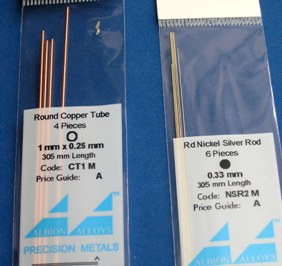
Decals…
Now this is where I usually get a bit twitchy when it comes to Airfix’s decals – they are almost always printed very well, in register and accurate and feature all the stencilling that’s needed – so far so good. In the past I have found them to be quite thick and matt in appearance and these factors almost always has resulted in annoying silvering (see Techniques Bank – ‘Getting rid of decal silvering’). However, I have to report that I found these much better; thinner and slightly shiny, all much better. The gloss surface that the Xtracolor enamel gives provides a good surface for these decals and so I found very little ‘silvering’ (caused by tiny amounts of air being trapped between the decal and the surface of the model). All coming together very well now and I just love that No.20(R) Squadron shark mouth decal under the nose.
Weathering and finishing
Now onto the home leg and some subtle weathering to finish off this project. Looking at the reference images I have and taking a good look at a couple of Harriers at previous air shows and on operations, it is clear that most GR.7s had a pretty flat/satin finish. I like Gunze Sangyo varnishes because they spray very well and have a nice flat finish that will take the pastel chalk dust to come very well. The varnish went on and all the undercarriage units added – I just stayed away from spraying the legs and bays as they are glossier in appearance on real aircraft. Pleased to see that all the wheels still touched the ground at the same time – don’t you just hate it when you do all that prep before, test the sit and fit and all is well, only to find when you later add the glue and come to attach the parts that oh no, they don’t sit right now!! What’s that all about? So, no such probs this time around.
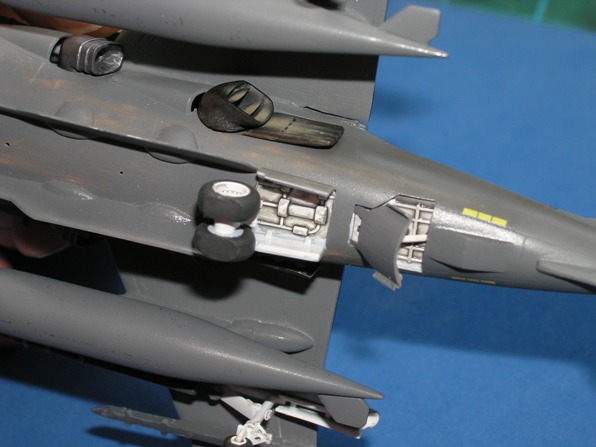
On the upper surfaces of the centre part of the main wing you may be able to just notice some scuffing that I’ve added – caused by the boots of ground crew as the work on the aircraft. Some dark grey paint thinned and applied with a very small pointed brush created the effect I was after.
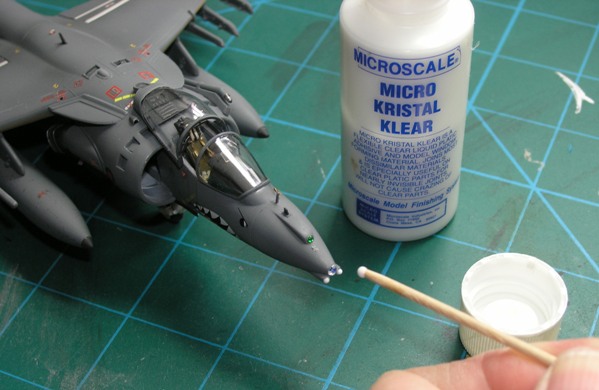
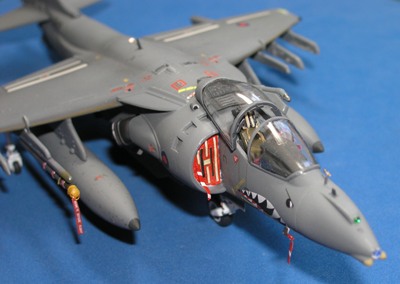
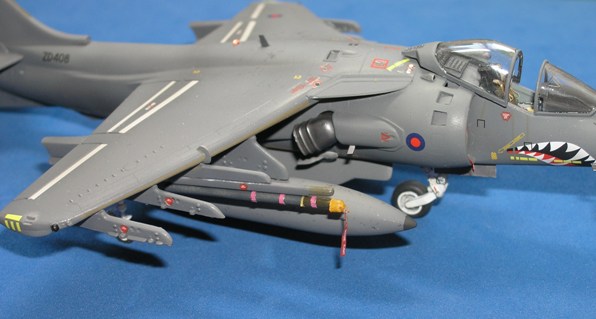
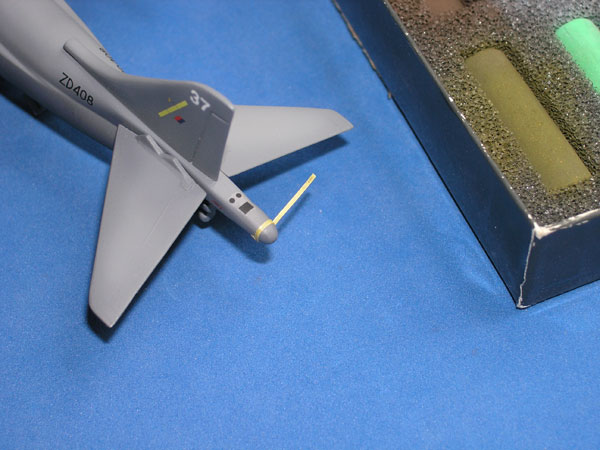
A few fine mods to the rear end and weathering with pastels completes this project. What do you think?
